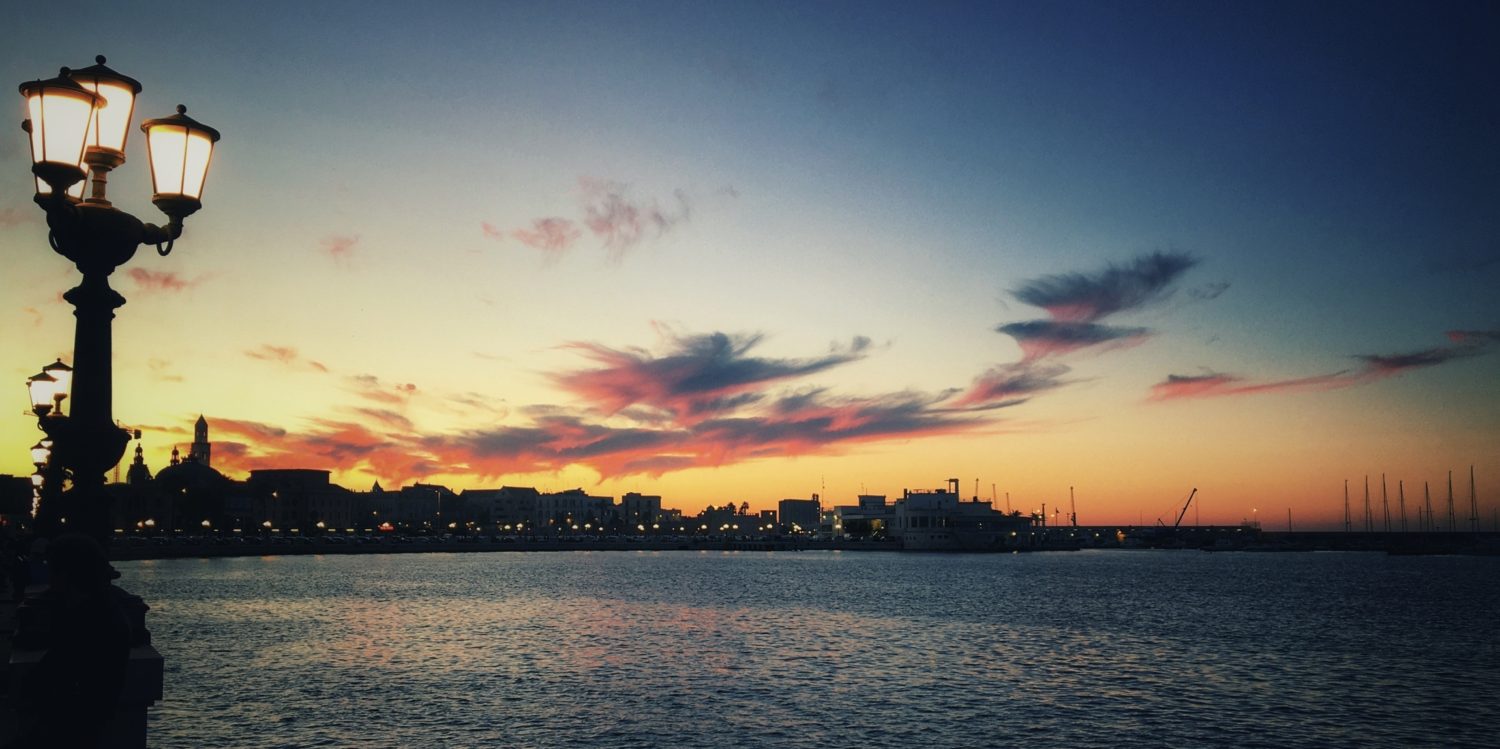The famous onions of Tropea
Calabria is the rugged, sparsely-populated and partly mountainous region that begins south of Naples and extends down into the “toe” of Italy’s “boot”, towards Sicily. As well, as the notorious ‘Ndrangheta criminal syndicate, Calabria is famous for the spicy spreadable salami ‘Nduja, the Calabrese soppressata dry sausage, peperoncino (red chilli peppers – Calabrian cuisine is notably hotter than in the rest of Italy) and the distinctive Tropea red onions. They grow between April and October and the most famous and revered variety cipolla da serbo are in season in May and June.
They resemble giant spring onions but with a bright red bulb and they are renowned for their sweet and more delicate taste. In fact, Calabrians claim that when a Tropea onion is ripe, it should be able to be “eaten just like an apple”. Having bought some of these prized onions for the first time earlier this week, I can concur that they certainly are sweeter than their brown and white cousins and were equally at home being finely chopped raw into a salad and also, cooked and softened over a heat to form the base of a casserole. This versatility means that Tropea onions are frequently served in Italy as part of antipasti cold cut spreads, as a panini filling, as pizza toppings, in pasta dishes and even grilled or barbequed whole (in Catania in Sicily I saw a variation of this where the whole onions had bacon or in some cases, intestines wrapped around them and they were then cooked outside over charcoal).

Tropea onions have been awarded PGI status (Protected Geographical Indication) and are known locally as the “red gold”. That said, I’ve noticed that Italians do seem to have a particular penchant for referring to edible items as “gold” – peperoni crusci (dried sweet peppers) is known as “the red gold of Basilicata” and the residents of Bronte in Sicily, a town renowned all over Italy for its high-quality pistachios talk about the humble nut as its “green gold”.
The origins of these Tropea onions have been disputed but it’s now widely agreed that they were most likely introduced to Calabria by the Greeks and Phoenicians from present-day Lebanon around 3,000 years ago. Tropea’s sandy soil, proximity to the coast and more moderate climate meant that the conditions were ideal for these unusual onions to flourish and eventually become one of the region’s best-known culinary exports. The reason for their sweetness is due to a lower level of pyruvic acid than normal brown onions and this makes them less pungent and harsh – also less likely to induce tears as you slice them.



Red Onions “Cipolle di Tropea” (photo: Martin Mboesch), my own purchases and a wholewheat lampascioni and wholewheat pasta I made with them.
The cipolla da serbo also reputedly has numerous health benefits and the Roman author, naturalist and philosopher Pliny the Elder (his first solo album went massively under-the-radar) detailed the 30 ailments which can be treated by these particular onions in his then-groundbreaking encyclopaedia “Naturalis Historia”. Pliny also pointed out that any dishes containing onions are curative as well as more nourishing. Good to know…







Just a few examples of the different landscapes Calabria has to offer; Tropea, Belvedere Marittimo, Condofuri and Scalea.
I have been to Calabria twice; a week before the first Covid lockdown when I stayed in the coastal villages of Belvedere Marittimo, Diamante and Scalea and then last September, when I spent several hours winding my way through its mountainous landscapes on my way to Villa San Giovanni, to then take the short ferry hop over to Messina, Sicily (and then all the way back again). The ‘vibe’ is noticeably different to that in Puglia; the scenery is more varied (craggy mountains, hilltops towns, scenic coasts and then fertile plains), the people slightly less open and welcoming and overall, it seems more wild and remote. Puglia is by no means a developed region – apart from the bigger towns and cities, a lot of its rural areas appear to be just row upon row of olive trees and vines. However, parts of Calabria feel a long way from civilisation. Having said that; I was still pleasantly surprised by the fare available in the various Calabrian service stations I stopped at; ‘Ndjuja and mozzarella panini were the order of the day (historically, the region’s hot and humid climate led to food preservation techniques being key and cured meat and salsiccia are popular staples here).
To find out more about Tropea’s unique red onions, you can watch the video below (it’s in Italian but English subtitles are provided):
Some Tropea onion recipes for inspiration:

